Define Cytoskeleton
The cytoskeleton is like the scaffolding of a cell, providing structural support and shape. It’s a huge network of proteins that form a framework inside the cell, allowing it to maintain its shape, move, and carry out various functions. The cytoskeleton can also be understood as the internal skeleton. There are three main components of a cytoskeleton: Microtubules, Microfilaments, and Intermediate Filaments. Microtubules act like highways for transporting materials within the cell, Microfilaments are involved in cell contraction and movement, while Intermediate Filaments provide strength. The cytoskeleton plays a crucial role in cell division, cell signaling, and maintaining the overall integrity of the cell’s structure, contributing to its ability to function properly.
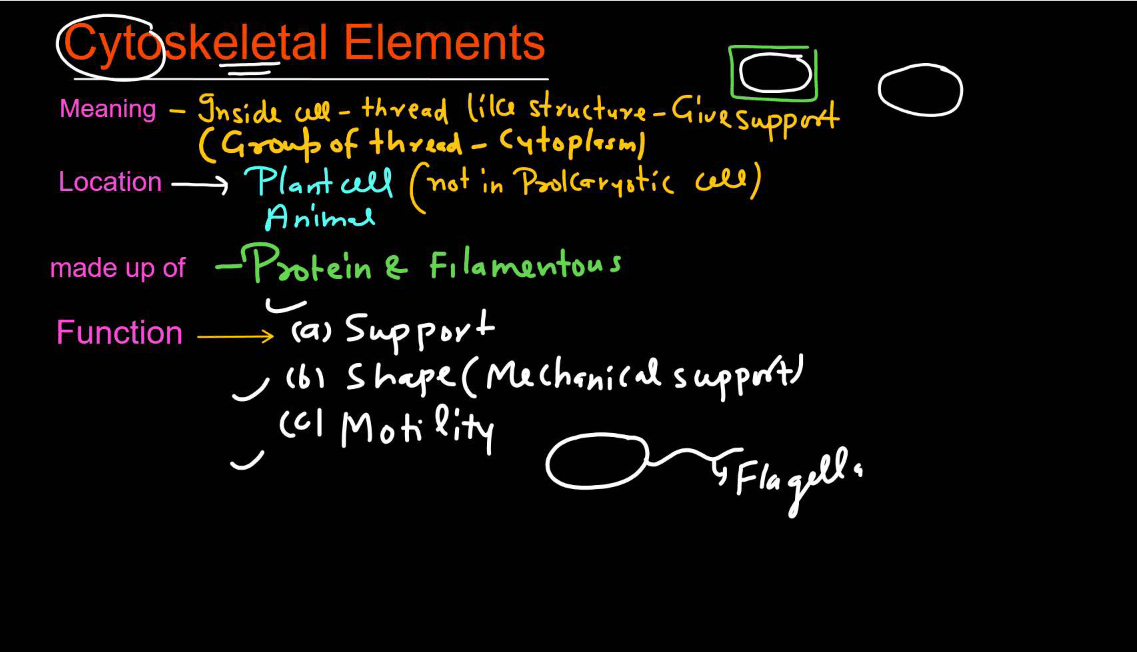
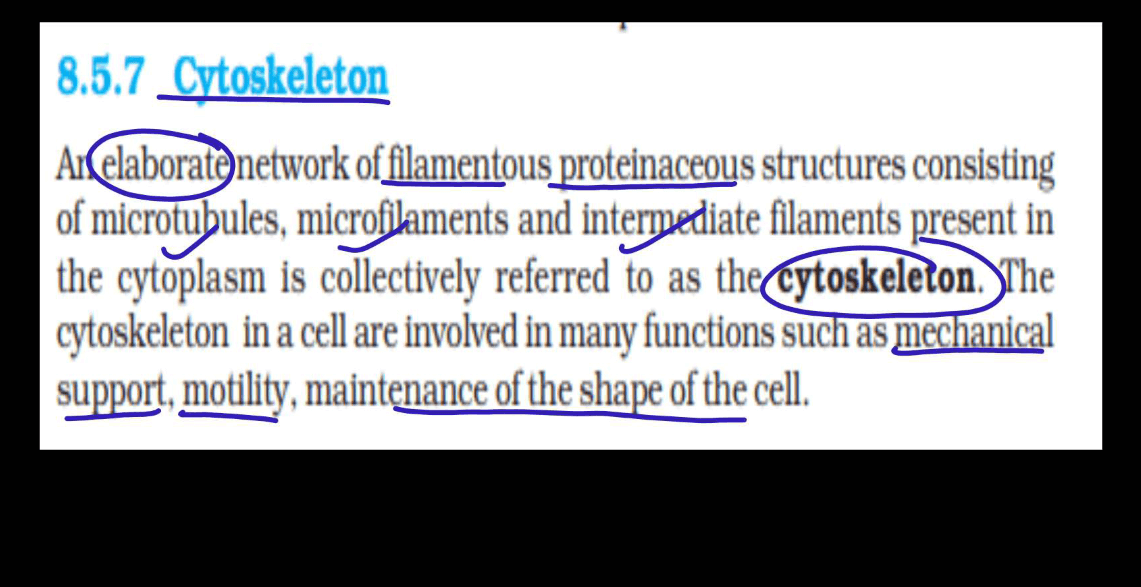
Structure of Cytoskeleton
The cytoskeleton is like a cell’s internal scaffolding, providing structure and support. The cytoskeleton is a cellular framework comprised of microtubules, microfilaments (actin), and intermediate filaments. Microtubules, made of tubulin, form hollow tubes supporting cell structure and facilitating intracellular transport. Actin-based microfilaments contribute to cell shape, movement, and division. This dynamic network enables cells to change shape, move, and carry out essential functions, crucial for maintaining cellular integrity and functionality.
Types of Cytoskeletal Elements
The cytoskeleton consists of three main types of protein filaments: microtubules, microfilaments (actin filaments), and intermediate filaments. These elements provide structural support, help with cell movement, and contribute to various cellular processes.
| Types of Cytoskeletal Elements | |
| Types | Description |
| Microtubules | Microtubules are tiny tube-like structures in cells, providing structural support and helping move materials. They play a crucial role in cell division and intracellular transport. |
| Microfilaments | Microfilaments are thin, thread-like structures in cells, composed of proteins. They contribute to cell shape, movement, and division, essential for various cellular functions. |
| Intermediate Filaments | Intermediate Filaments Intermediate filaments are sturdy protein structures in cells, offering mechanical support and maintaining cell shape. They form a structural framework crucial for cellular integrity and resilience. |
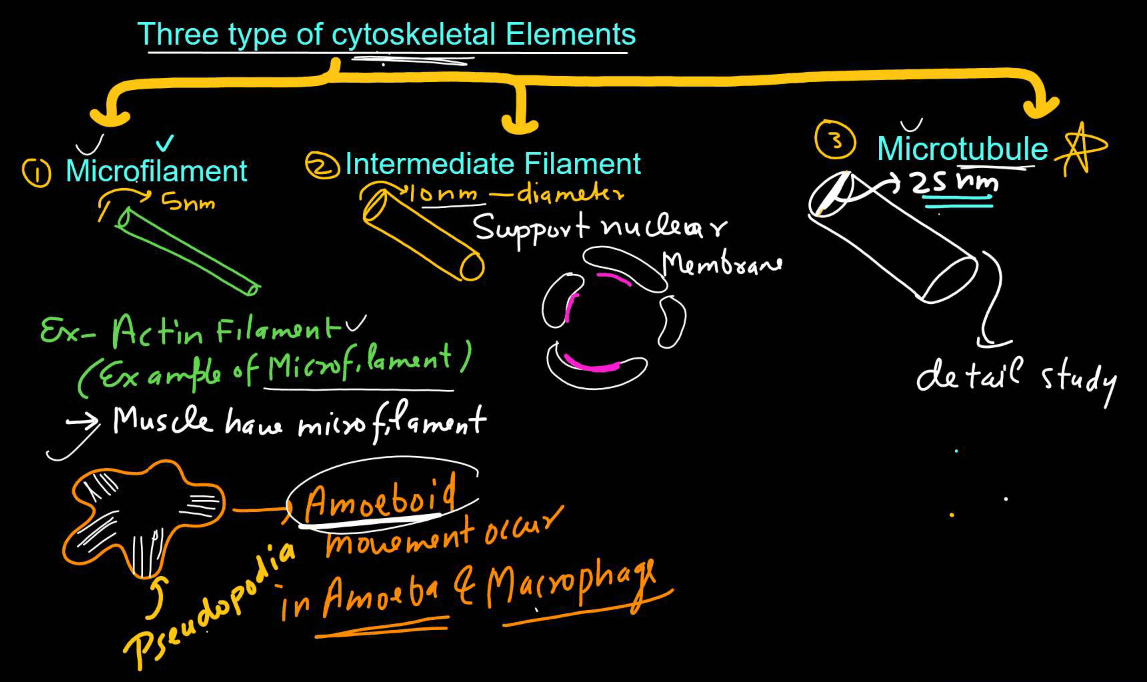
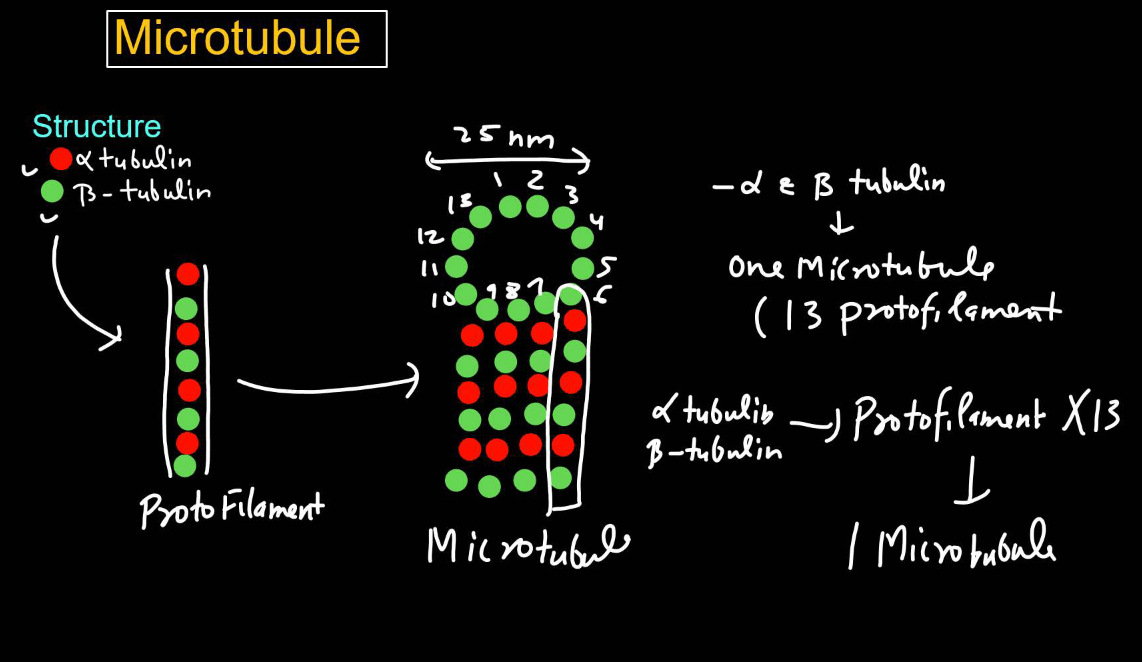
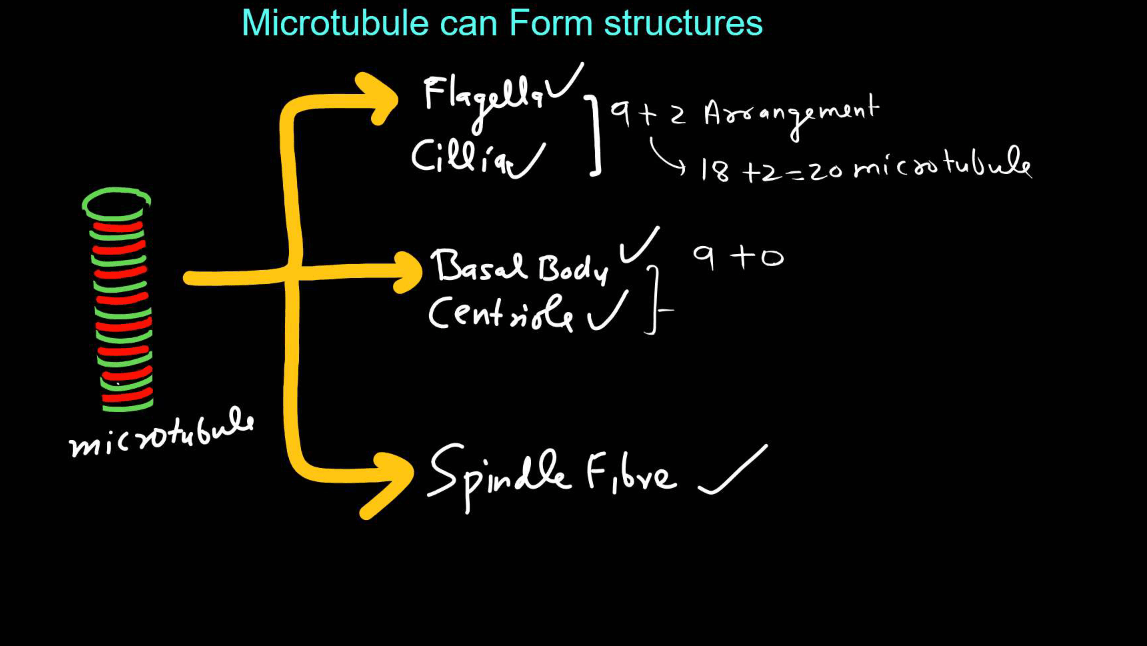
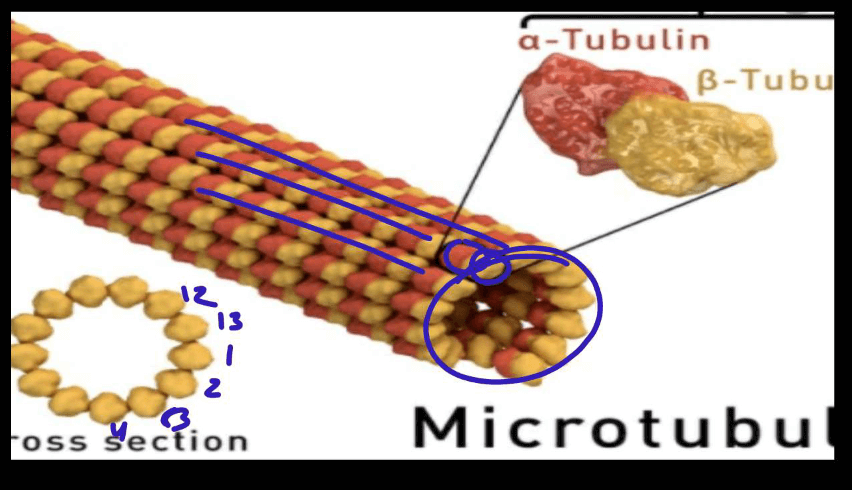
The cytoskeleton is made up of certain motor proteins: Kinesin, Dyneins, and Myosin. Microtubules, actin filaments, and intermediate filaments collectively form the cytoskeleton. Kinesis and Dyneins are motor proteins associated with microtubules; Kinesins move cellular cargo toward the cell center. Myosin, associated with actin filaments, powers muscle contraction and contributes to cellular movement.
Kinesin (for microfilaments):
Kinesin is a motor protein in cells, traveling on microtubules to transport cellular materials. It plays a crucial role in cell function, moving cargo and contributing to cellular structure and organization.
Dyneins:
Dyneins are motor proteins in cells, moving on microtubules in the opposite direction of kinesins. They transport cellular materials, aiding in cell processes like intracellular transport and cilia/flagella movement.
Myosin (for actin filaments):
Myosin is a motor protein in cells, particularly in muscle cells. It powers muscle contraction by interacting with actin filaments, causing them to slide and generate movement essential for muscle functions.
Functions of Cytoskeleton
These functions collectively contribute to the dynamic nature and functionality of the cell. Some of the functions of the cytoskeleton have been discussed below:
- Structural Support: Maintain cell shape and rigidity. Supports the overall structural integrity of the cell.
- Cell Movement: Facilitates cell motility and changes in the shape. Enables the movement of organelles within the cell.
- Intracellular Transport: Serves as tracks for motor proteins, aiding in the movement of vesicles and organelles.
- Cell Division: Guides the formation of the mitotic spindle during cell division.
- Mechanical Stability: Provides resistance to mechanical stress and external forces. Helps cells withstand deformation and maintain their functional form.
Learn more about Cytoskeleton Elements Nucleus, Watch the video

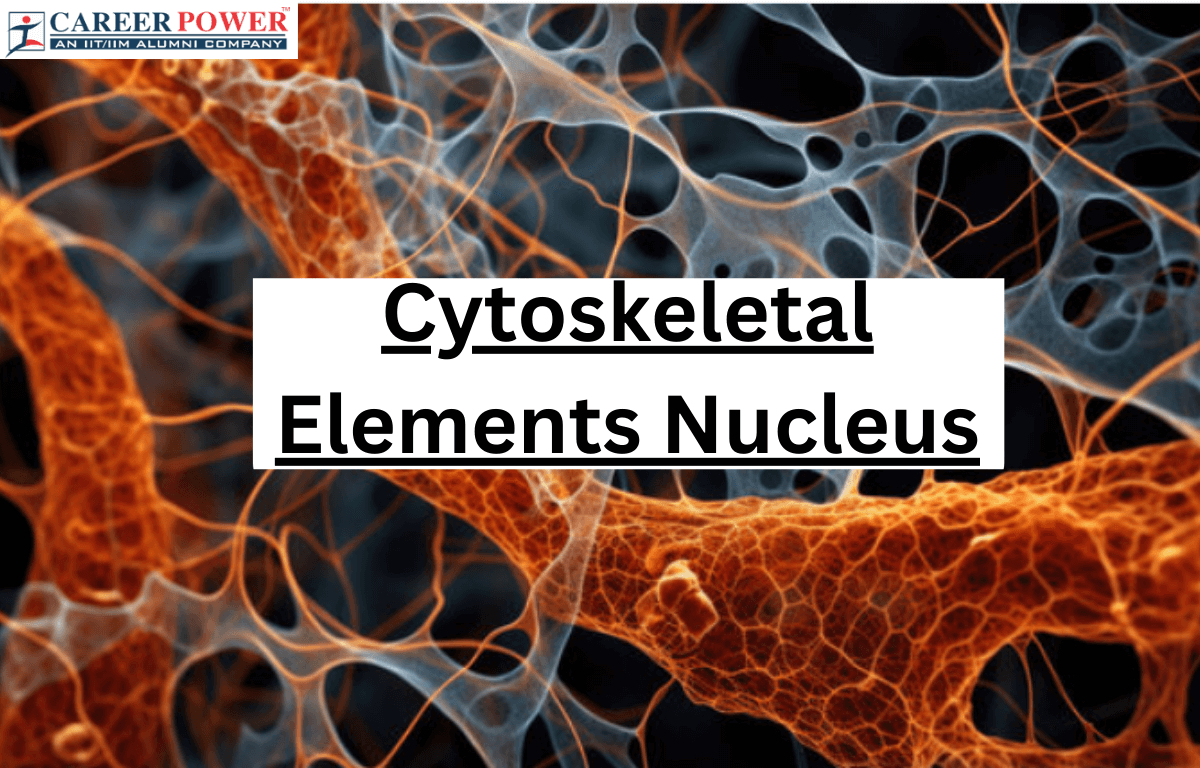

 50 Vegetables Name for Kids in English a...
50 Vegetables Name for Kids in English a...
 Food Chain: Definition, Types, Examples,...
Food Chain: Definition, Types, Examples,...
 Human Respiratory System: Definition, Di...
Human Respiratory System: Definition, Di...













